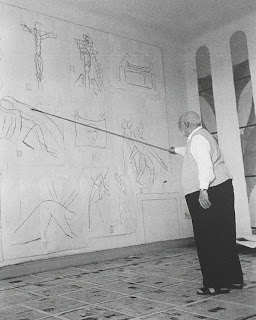Why drawing is an important part of the sculptural process
Richard Wilson is a British sculptor who presents the urban environment to us in new ways. He disorientates us by reinterpreting form and space.
 |
| Turning the Place Over comprised a vast ovoid section of a façade that rotates three dimensionally on a spindle |
From an interview with Rajesh Punj - May 2014
RP: How integral is drawing when planning a work?
RW: Drawings are vital for me, because number one I am working with teams, and I have got to be able to express my idea sensibly, and in a coherent way, so that there is no misunderstanding. Sometimes I am invited to make drawings and models to assist in the securing of funding, so you would be asked to make a maquette in order to convince someone who is not that well versed in the art grammar, that they can say oh I get it, I like it, let’s put money forward into that, so it will be a local authority perhaps.
So these things are done to the best of my ability, in order to convey the best possible way the concept as it is at that moment in time. The other thing the drawings are done for is, in the same way people go to the gym to work-out, I use drawing as a mental limbering up. I have got to get very familiar with my work, because once I am familiar with it, it is handed over.
 |
| Over Easy / 1998 / © Richard Wilson / Tate London |
Richard Wilson: Stealing Space can be seen at Annely Juda Fine Art (London) 26 January–25 March 2017
"... The exhibition features four new works, two of which are in direct response to the gallery's internal and external architecture....Wilson’s work offers a new perspective on everyday spaces, forcing us to re-evaluate our surroundings and to look again."
 |
| “Space between the Door & the Curtain”, 2016 |






Comments
Post a Comment